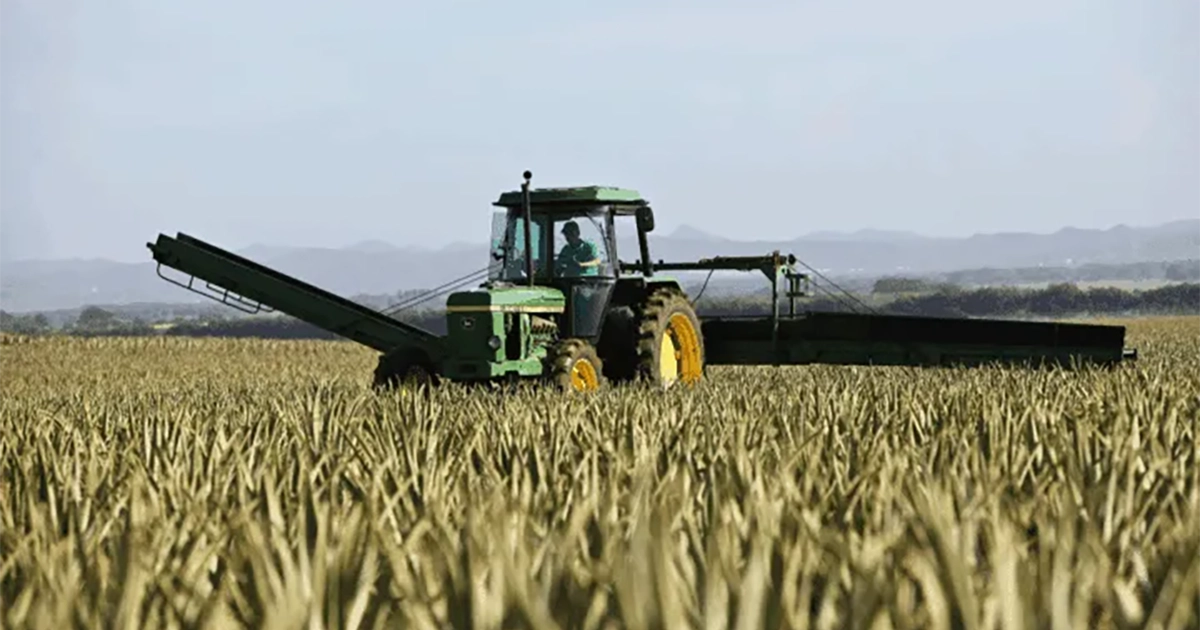
CANADA — We’ve all felt that pinch at the grocery store lately. Prices for everyday staples seem to be on a relentless climb, and it’s easy to point fingers at a dozen different economic factors. But there’s a crucial piece of this puzzle that often gets overlooked, and something that starts far from the checkout aisle. The reliability of farm equipment plays a crucial role in the fields where our food begins its journey. When a critical piece of machinery goes down, it’s not just the farmer’s problem. This is how farm equipment failures disrupt the food chain. Read the full story on morningagclips.com
Why Every Hour Matters During Harvest
Harvest is a race against daylight and moisture. Crops left in the field too long can see a drop in quality or, sometimes, become unharvestable. In late-season trials conducted by Dairyland Seed agronomists, combines started in late September outperformed those left rolling into mid-October by roughly 10 bushels per acre. Even when 2023’s weather skewed later, early October harvests still held a 6-bushel advantage over delayed runs. At today’s corn prices, that gap translates into an extra $27–$45 per acre, funds that would help cover fuel, labor, or seed for next season. Letting a single mechanical delay eat into that window doesn’t just cost time but real dollars per field.
The Real Cost of Machinery Downtime
Broken equipment doesn’t just delay work; it sets off a cascade of expenses and it becomes easier to see how farm equipment failures disrupt the food chain. According to a 2023 U.S. PIRG Education Fund study, restrictive repair policies and unplanned breakdowns cost farmers about $3,348 per season. Every hour a tractor sits idle burns cash, fuel trickles away in neutral, crews rack up overtime, and expedited shipping for critical parts chips away at profitability. Over tight planting and harvest windows, these hidden costs can eclipse razor-thin margins. In practice, routine maintenance and simple, field-friendly tweaks often pay for themselves by preventing extended stoppages and keeping harvest schedules on track when every hour counts.
When Farm Costs Rise, So Do Grocery Prices
Input inflation does not stay behind the farm gate. USDA’s March 2025 Food Price Outlook shows retail food prices running 3% higher than a year earlier, even after the worst of the pandemic-era surge faded. Economists flag on-farm operating costs like repairs, fuel, and hired help as a key driver that keeps shelf tags inching up. Every unscheduled hour a combine waits on a technician shaves production efficiency, nudging the Consumer Price Index north in fractions that compound throughout the supply chain.
Reducing Downtime Without Breaking the Bank
The encouraging news is that most uptime gains come from habits any operation can afford. Preventive maintenance is the first and biggest win. As GrowSmart Farming points out, oil analysis, fluid top-offs, and software updates are non-negotiable chores that turn “maybe tomorrow” repairs into quick, scheduled pit stops.
Smart retrofits multiply that benefit. Replace a high-wear bushing with a hardened replacement or use a farmer-invented replacement part that increases efficiency. The payoff is twofold: fewer frantic parts runs and faster fixes when they’re needed. Taken together, these practical steps create a virtuous loop: machines stay in the field, margins stay intact, and the crew works proactively instead of playing catch-up. Not flashy, just effective and steady reliability that’s hard to beat.
The Broader Food System Impact
Downtime is not just a farm-gate headache but affects every link that moves grain from field to shelf. When equipment delays harvest, wetter corn heads for storage and pushes up the cost of conditioning. The University of Minnesota Extension estimates that gas-fired dryers burn about 0.02 gallons of propane per bushel for every point of moisture removed. If the U.S. Energy Information Administration projects average propane prices of $1.65 per gallon for summer 2025, that means drying 27%-moisture corn down to 15% can cost 40 cents per bushel in fuel alone.
Those extra pennies add up fast at commercial scale, and they are only the first domino. Wet grain forces elevators to reshuffle aeration schedules, railcars idle while moisture targets are met, and trucks rack up miles and diesel costs. That volatility rolls into the wholesale market, where buyers hedge with higher bids just to guarantee supply, and retailers cushion their margins in anticipation of the next hiccup.
By the time shoppers push a cart down the cereal aisle, the cost of that stalled combine is baked into every box. What began as a slipped bearing in one county now shapes national pricing models. Downtime also chips away at trust. When a processor can’t be sure grain will arrive on spec or on time, they lean harder on contracts and penalties, adding another layer of stress for growers already working the weather clock.
Why It Matters Tomorrow
Every five-minute service check is more than routine—it’s a quiet vote for affordable food. When our machines fire on the first turn, elevators load on schedule, processors stay on spec, and families face prices they can plan around. Skip that check, and the cost hitchhikes straight to the consumer’s pocket. I’ve run the numbers, I’ve been in the equipment, and I’ve seen the difference. Reliability isn’t a luxury add-on; it’s the leverage we control every single day. Whether you manage a thousand acres or just buy a loaf of bread, remember that farming is a well-kept machine that keeps the food chain steady. Use the new innovations to increase the efficiency and protect the budget—that’s a payoff everyone tastes.


















